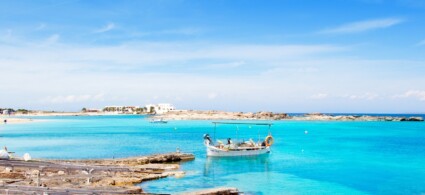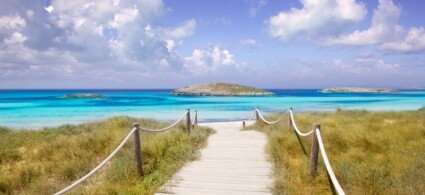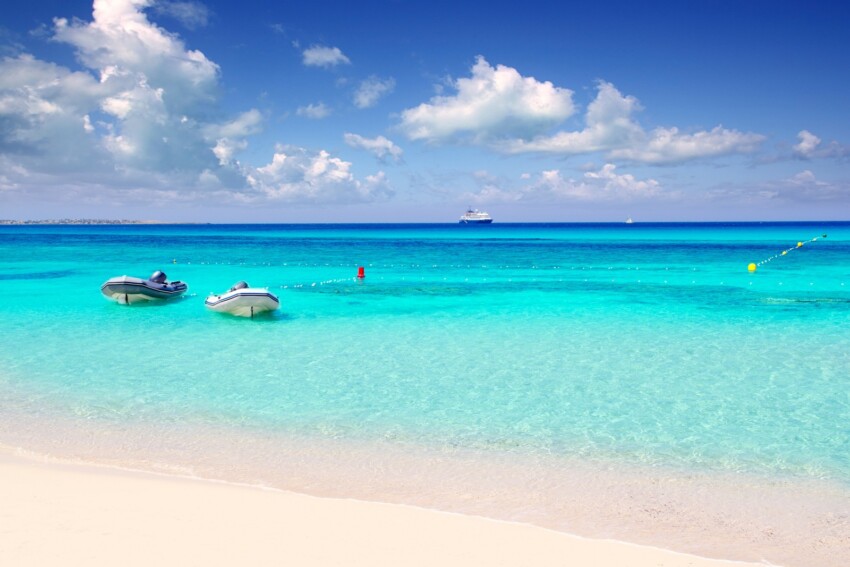

Formentera is one of those islands that has staked its entire tourist reputation on the beauty of its beaches. And not without reason: Formentera‘s pristine beaches are among the most beautiful in Europe, dare we say the world.
What makes these beaches so special? Almost all of them, even the most crowded ones, have a natural appearance, thanks to the absence of mega-hotel constructions in the vicinity and to environmental conservation projects carried out by local administrations and associations, including the construction of wooden footbridges that avoid damaging the sand dunes and their delicate ecosystem.
Many beaches retain the traditional huts still used by fishermen for their boats, reminders of the days when fishing was the island’s main activity: a hint of romance and nostalgia that adds to the charm of the landscape.
The final touch is provided by the rustic beach bars of Formentera, quite different from the glamorous beach clubs of Ibiza: much smaller and more quaint, they are decidedly more informal, including those that in addition to drinks and food also offer music evenings with DJ sets or concerts.
If they are all enchanting, how do you choose the beaches to visit during a holiday in Formentera? Simple: just consult our list of the most beautiful beaches in Formentera!
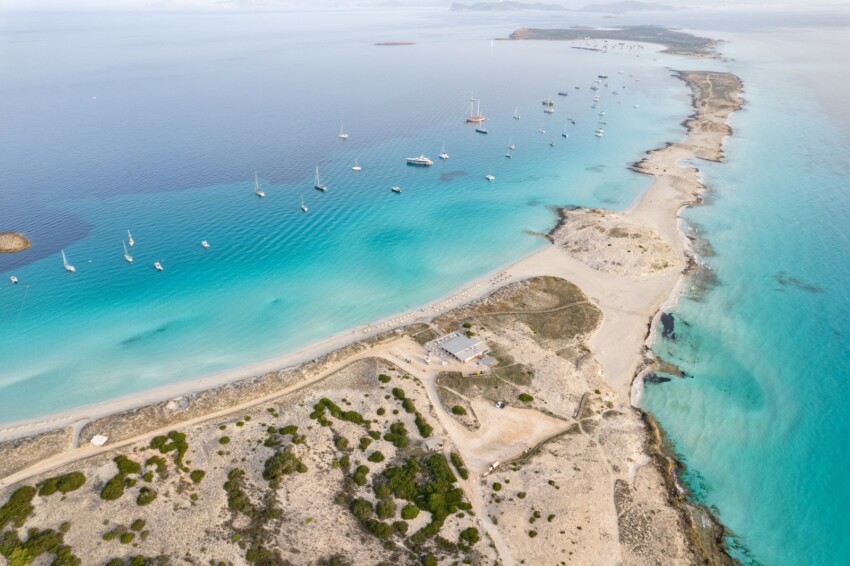
If you are visiting Formentera on a day trip from Ibiza and only have time for one beach, choose Playa de Ses Illetes, Formentera’s most popular beach.
It is not difficult to understand why tourists love Ses Illetes: this long stretch of white sand bathed by an incredibly blue sea has a distinctly Caribbean charm that leaves all its visitors open-mouthed. Its beauty is not diminished by the presence in the summer months of numerous visitors, a heterogeneous mix of rich people off their boats, tourists staying on the island, residents and tourists on excursions from Ibiza.
If you are looking for a quiet spot, move to the northern end of the beach, where you will find an area reserved for naturists: enter if you are willing to take off your swimming costume, stop a little earlier if you prefer to wear it.
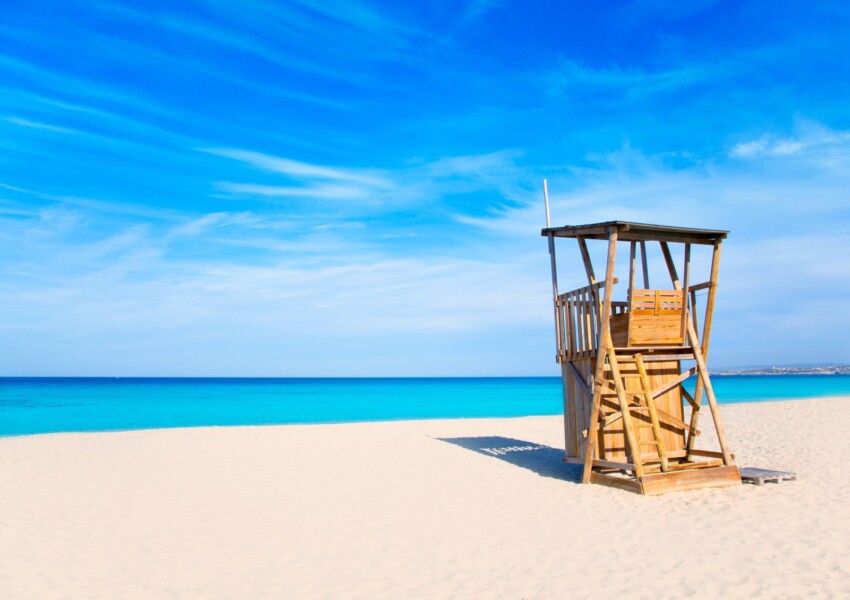
This beautiful beach of fine white sand, over a kilometre and a half long and 50 metres wide, opens up along Formentera’s north-eastern coastline, which is buffeted by strong winds that can create high waves and rushing currents.
It is considered the twin beach of Ses Illetes but, unlike its more famous sister, Playa de Llevant is one of Formentera’s most peaceful beaches, the ideal place to escape the crowds and stresses of everyday life. It is located on the Trucador peninsula, a thin strip of land between Punta des Trucadors and Platja de ses Canyes, 3 kilometres from Es Pujols. To quench your hunger and thirst, you will find a couple of bars and chirinquitos.
Beware of the winds and currents, which can be very strong; on stormy days it is best not to enter the water and enjoy the spectacle of the waves crashing vigorously on the shore from the beach.
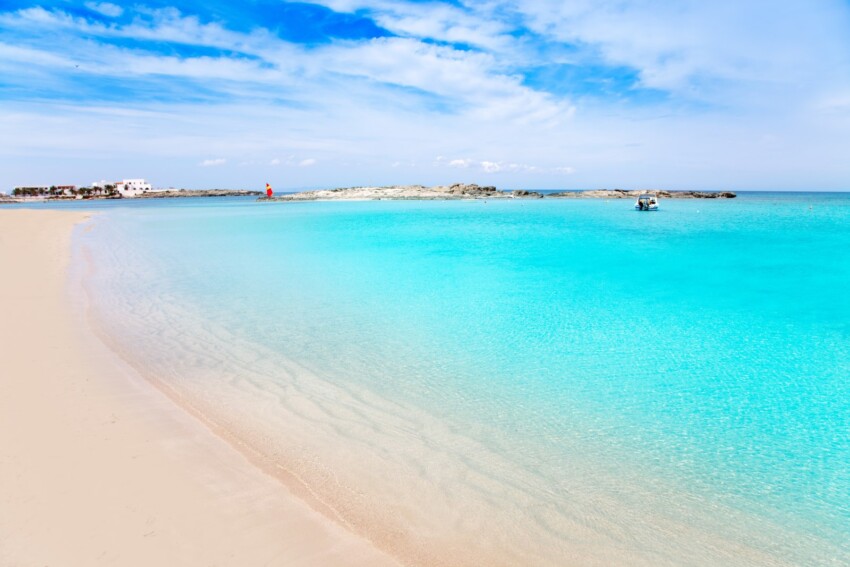
Es Pujols is a wide, partly equipped, partly free beach located in one of the most popular tourist complexes on the island. Behind it it is protected by a dune system that can be crossed thanks to a system of wooden walkways, while some rock formations a few metres from the shore break up the monotony of the long sandy shore.
All essential services are available, as well as a beautiful seafront promenade lined with a long line of bars, restaurants and shops, and it is also possible to practice various water sports.

Platja de ses Canyes is located along the north-eastern coast of Formentera 2 kilometres north of Es Pujols, between Cala en Baster and Platja de Tramuntana just after the Punta Alta peninsula and the islet of Illa de ses Parres.
The beach of fine white sand, flanked by some rocky areas, is bathed by a crystal-clear turquoise sea that is often rough as the bay is open to the winds. The beach, which is never overcrowded despite being very close to Sant Ferran, is very popular with naturists.
Near Canyes beach, you can visit the megalithic tomb of Ca na Costa and the small bays of Sa Roqueta and Ses Canyes.
Also known as Costa des Carnatge, Playa Tramuntana is a 2 km long rocky stretch of coast between Cala en Baster and Caló de Sant Agustí. Difficult to reach and unmarked, this beach is one of Formentera’s quietest areas, wild and unspoilt.
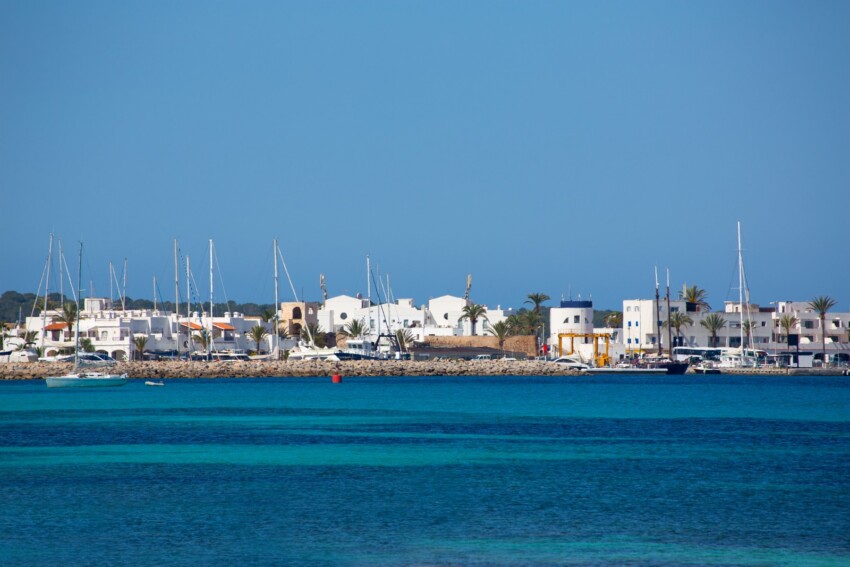
The harbour of La Savina is the main access point to Formentera both for those arriving by ferry and for those arriving on a very expensive private yacht. Not far from the harbour is the beach of Cala Savina, an expanse of white sand bathed by a blue sea that contrasts with the green of the surrounding pine forest.
From here you can enjoy a splendid view of the neighbouring island of Ibiza. Also check out the nearby Cavall d’en Borràs.
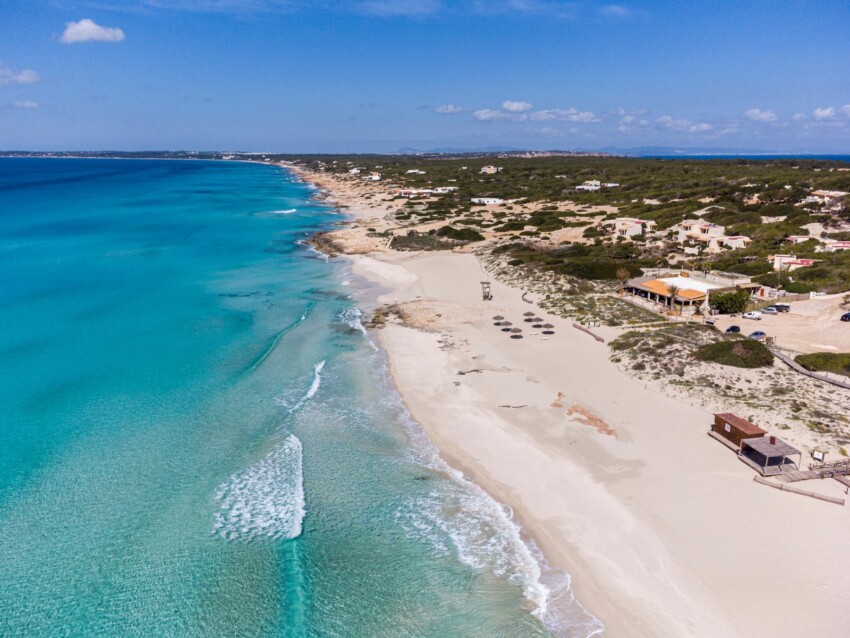
There is no shortage of space at Playa de Migjorn, Formentera’s longest beach (a good six kilometres!). The name means ‘midday beach‘, but be careful about exposing yourself to the Formentera sun during the hottest hours of the day! Better to rent a parasol and sit in the shade, waiting for a chance to take a dip in the crystal-clear waters of Playa Migjorn.
The beach alternates between rocky areas and golden sandy coves. Take your snorkelling equipment with you as the rocks off the coast hide a rich underwater fauna.
Excellent typical restaurants, chiringuitos and various services, including numerous water sports, serve the beach.
Platja de Migjorn stretches along the southern coast of the island between Cap de Barbaria and Far de la Mola and is only two kilometres from Sant Francesc Xavier and a 10-minute drive from the port of La Savina.
At the eastern end of Playa Migjorn begins Playa Es Arenals, a sandy beach famous because the first diving centre and windsurfing school on the island of Formentera were opened here.
It retains a beautiful natural appearance, although it is definitely busier than the neighbouring Playa Migjorn, partly because of the ease of access and partly because of the numerous services available including deckchair and sunshade hire, beach bars and restaurants.
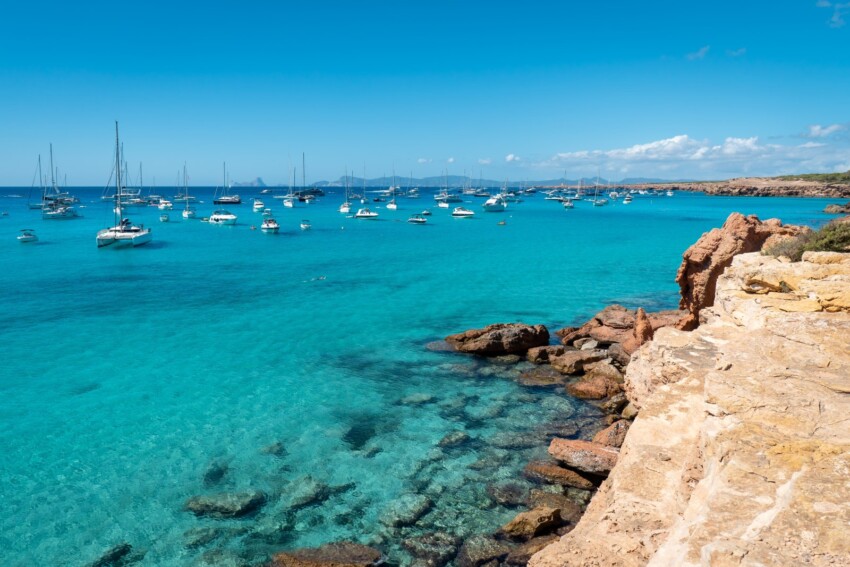
Cala Saona is one of Formentera’s most beautiful beaches, set in a tiny horseshoe-shaped bay and surrounded by reddish rocks that create a spectacular contrast with the turquoise blue of the calm, transparent sea.
Sheltered from the wind and with shallow waters, the beach of soft white sand is 140 metres long and a good 200 metres deep. It is also suitable for families with small children, and the wooded area behind the beach is perfect for pleasant walks in the cool shade.
Cala Saona offers beautiful views of Punta de Sa Gavina and Puta Rasa and offers the possibility of beautiful walks in a green and quiet landscape; on clear days it is possible to see the coast of Ibiza.
One of Formentera’s hidden gems, the pretty Calò d’en Trull is a small beach of sand and reddish rocks not far from Cala Saona. Difficult to reach and therefore generally semi-deserted, this wild-looking beach is made even more attractive by the presence of wooden boathouses.
There are no bars or restaurants around so take a good supply of food and drink with you.
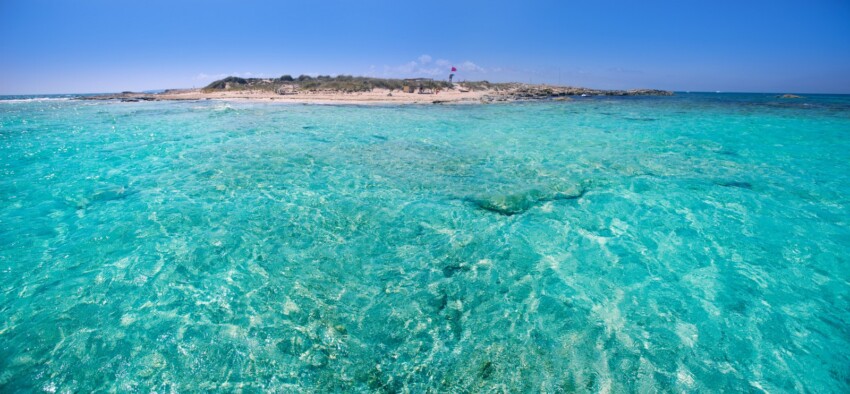
From Ses Illetes beach you can see the uninhabited island of Espalmador, a nature reserve just a few metres off the coast of Formentera, so close you can almost touch it.
Unfortunately, it is not possible to make the crossing by swimming due to strong currents, but you can reach the island by ferry from the port of La Savina. There are no buildings on the island, which makes it all the more attractive; you can explore unspoilt beaches with pure white sand and a sea of a thousand shades of blue in peace.
The centre of the island with its muddy areas where numerous bird species find shelter is a true paradise for birdwatchers.
In the following map you can see the location of the main places of interest mentioned in this article.
